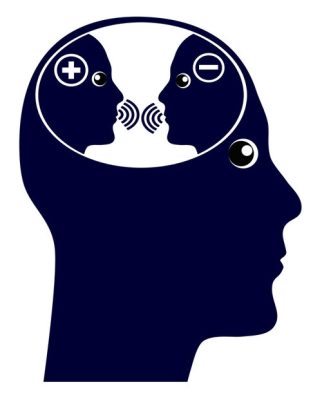Cognitive Restructuring, Examining The Cognitive Error, and Rebuttal

Cognitive Restructuring, Examining The Cognitive Error, and Rebuttal
Rebuttal is defined as “an opposing argument or debate.” It is a form of an argument, a counterargument, bringing evidence against or contrary to something we may have thought or held to be true. The verb for the word, “rebuttal,” is “to rebut,” which comes from old French, “Rebouter,” which means “disfavor.” In other words, when we have a rebuttal, we are disfavoring something, and we are saying why we are disfavoring it.
Therefore, a rebuttal can be defined as a statement used to refute, negate, or disfavor a claim to bring or shed some light on the matter at hand.
For example, Florence, who took some pills after a breakup with her boyfriend, had a series of automatic thoughts. These automatic thoughts, in turn, contained cognitive errors (distortions). Those cognitive errors were not examined or challenged, and she had no rebuttals available as a result. In other words, there was no way to refute or negate those cognitive errors, which led her to act on her thought of overdosing with pills. A rebuttal could have prevented that, or at least could have decreased the likelihood of it happening.
There is a 4-step process to rebuttals-which is part of an overall process, known as Cognitive Restructuring:
Step 1: Identification of the Automatic Thought:
Automatic thoughts arrive consciously, effortlessly, reflexively, involuntary, mechanically, and sometimes impulsively. We don’t have to stop, think, or retrieve. They just come. While this process is part of our mind’s economical mechanism of action, it does not come without consequences. Our automatic thoughts emerge from our Ordinary or Normal Blueprint: our core and limiting beliefs based on our past. Our automatic thoughts are never forward-thinking, even when they are being used to make decisions about the future.
There are 6 categories of Automatic Thoughts:
-
About ourselves (I am a total failure; I am unlovable; I am worthless; I am an impostor)
-
About how we think others perceive us (Nobody loves me; People don’t value me; People don’t think I am that smart; People think I speak too much)
-
About the future (That is never going to work out; The older I get, the harder it will get for me; Things are only going to get worse; there is no hope)
-
About others (People are mean; People are better off than me; People are just rude; People are just dishonest everywhere you go)
-
About the world (This is an unfair world; This is an unsafe world; Everyone on their own in this world and that’s it; Things will never change in this world)
-
About our coping strategies (I would not be able to get another job should I be fired; I don’t think I can ever learn any new skills; If he dies, I’ll have no way to take care of our child; Any new stressor that comes up will be the end for me. I have no more resilience left).
In this first step of Cognitive Restructuring, which identifies the automatic thought, knowing these six categories will make it easier to identify and work with them.
Step 2: Identification of the cognitive error (distortion)
In addition to being rooted in the past; in addition to being impulsive and subjective, our automatic thoughts are filled with cognitive errors.
Some of the most common cognitive errors to be mastered by those who seek knowing how to use cognitive restructuring, either for themselves or others, are:
-
Filtering (I focus just on the negative or on the unhelpful side of the story, report, or statement)
-
Discounting the positive (I act as if anything positive said about me did not exist or had nothing to do with me)
-
Minimizing (I reduce the importance of, or downplay anything positive that may be said about me)
-
Labeling (I judge and give a name to everything)
-
Personalizing (I make everything about myself)
-
Overgeneralization (I regard something that happened once as “everything, all the time”)
-
Magnifying (I make things bigger than they really are. I blow things out of proportion)
-
Catastrophizing (I think the worst-case scenario)
-
Polarized thinking/Black and white thinking (I think in terms of either/or. I do not think of a middle ground. I think only in terms of “extremes”)
-
Should/Must Statements (I think things, people and I, should be and must be a certain way)
-
Jumping to conclusions (I assume, and I think my assumptions are accurate)
-
Mind reading (I assume what is going on with others and situations, and I think my assumptions as true)
-
Fortune Telling (I assume to know what is going to happen in the future, and I think my assumption is true)
-
Emotional Reasoning (I feel and I think my feeling to be true, and I act accordingly)
Mastering the above 14 most common cognitive errors will make Step 2 of Cognitive Restructuring manageable and fun.
Step 3: Examining the Cognitive Error
Examining the cognitive error(s) is a crucial step in the process of Cognitive Restructuring. Examining means scrutinizing, exploring, probing, investigating, weighing, and analyzing. This third step is both laborious and gratifying. This step also helps increase awareness, consciousness, and it may be one of the best and fastest CBT methods to decrease or even end suffering.
There are several methods used for this step. We recommend Socratic Questioning, and we reviewed twelve of the most common inquiries in our last CBT Certificate Class. We will be offering practical ways to master this step in our next CBT class on Wednesday, October 28, 2020, 7-9pm EDT.
Step 4: Rebuttal:
This is the last step, and there is no bypassing the other three to get to this one. Without successfully navigating the first three steps, there will be no achieving Step 4.
In addition to a deeper dive in examining cognitive errors, we will also look deeply into Step 4 -Rebuttal, at our next CBT class on Wednesday, October 28, 2020, 7-9pm EDT. In the meantime, here is what you can do.
-
Select a time during the day to identify the automatic thoughts you have had throughout the day. Remember, we cannot improve things we are not aware of
-
Identify as many cognitive errors as possible in five to ten of the automatic thoughts you have identified. This will make it more manageable.
-
Choose one of the cognitive errors you have identified. Based on our last class on Cognitive Restructuring, how would you go about examining it?
-
Choose one of the cognitive errors you have identified and examined. Based on our last class on Cognitive Restructuring, come up with a Rebuttal.
Rebuttal is the most challenging step in the process of Cognitive Restructuring. Dedicating as much effort as possible to master it is one of the best gifts to ourselves, our loved ones, and our patients and clients.
Are you up to it? We know you are. You are in this field because you care about decreasing and ending suffering. If we make an effort to master the optimal tools, nothing will be able to stop us. We will be building a new system, a new way of doing things that will eventually make the old ones obsolete and irrelevant. That is what we are doing. And that’s why we are very grateful to you.
We look forward to seeing you soon,
Karen and Mardoche






